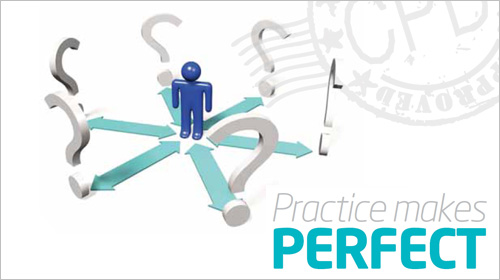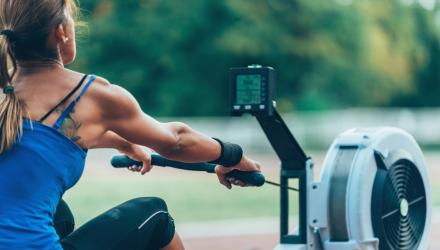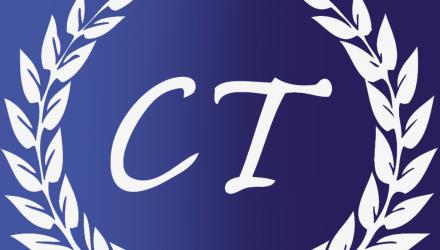In the first of a two-part CPD series to support people who participate in student practice education, CSP adviser Jennifer Duthie explains how to make the most of potential learning opportunities

Student Practice Education (SPE) offers a rich array of learning experiences for the band of practice educators, higher education institution (HEI) practice placement tutors and coordinators, students, support workers and other professionals involved.
SPE provides opportunities for all those involved to:
- learn new knowledge and skills
- develop existing knowledge and skills
- take on and achieve new challenges
- help and support others (patients, carers and other learners)
- exhibit high standards of professionalism
However, for some learners, the joy of discovery can be diminished by concerns about, for example, getting on with others, the assessment process or work pressures pulling in different directions.
Although such anxieties may be natural and can never be entirely removed, they may be lessened if those involved take a more proactive approach towards student practice placements as learning opportunities.
Seeing SPE as an activity that can enhance the practice setting learning environment as well as solely for student learning and development can be beneficial to all parties, including (as appropriate) administrative staff, support workers, porters, ward staff, community staff, other students and colleagues.
For example, a physiotherapy department could benefit from students on placement reviewing how service users are greeted or how patient pathways are explained.
Those learning from such a project could include the student, practice educator, departmental receptionist, support workers, other physios and other professionals.
If you are reading this and you do not currently participate in SPE, why not offer your support? Individuals working in physiotherapy all have their own role to play to make sure that they and everyone else get as much as possible out of SPE.
All levels of physiotherapy staff and students will find advice and tips on making the most of practice education for themselves and others in the new CSP Practice Education Information Support and Guidance.
Visit the CSP eportfolio
Some actions, that may help you take a proactive approach to getting the most out of SPE, are outlined below for you to consider.
How to make the most of SPE
Pre-placement: prepare
- Provide or gain as much information as you can about the placement; such as the services provided, client group, recommended background reading, equipment required (such as notebook, measuring tape, goniometer, stethoscope, appropriate uniform and footwear) geographical location, travel and accommodation requirements
- Make sure that you are familiar with the assessment process
- Make contact with your student or practice educator; an introduction pre-placement is always useful.
- Share any requirements or expectations regarding levels of support share any concerns or queries as appropriate with the HEI placement coordinator. They may help you to prepare for and plan the placement
- Seek help and advice where necessary – don’t wait until the placement has started to involve others and to ask for assistanceor guidance from them plan to start day one of the placement prepared, enthusiastic and ready to learn new things!
During placement: make the most of it
- Provide or attend a student induction in the workplace. Discuss and clarify mutual hopes and expectations for the placement
- Find out who could support learning – seek, include and learn from a range of others
- Work on your communication with your student or practice educator and others. Poor communication often results in misunderstandings and problems. However, timely, candid conversations can prevent or solve many challenges. Even the most experienced staff can run into problems by not considering communication carefully. Be prepared to learn from the good,and not so helpful, communication skills of others
- Try to problem solve independently as much as you can. It may help for you to use tools such as reflection (see resources toaid reflection in the CSP e-portfolio or SWOT analysis (strengths, weakness, opportunities and threats) to work through challenges
- If you encounter any challenges that you cannot sort out on your own, it is important to seek advice or support from an appropriate source (practice educator or university practice placement coordinator, for example) as soon as possible. The ability to problem solve and know when to seek help is a strength that will stand all physiotherapists and students in good stead in the future
- Remember, students are on placement to learn, not to show that they can do it all. There is always more to learn for everyone concerned. It may be useful to reflect on, for example, how people (from all parties) react to mistakes
- Try to access and recognise a wide range of learning opportunities. As well as developing your skills, think about otheropportunities. These might include overcoming challenges, working and learning with others, enabling others, seeing patients in different environments, discussing working with carers, service evaluation, discussing the meaning and enactment of care and compassion, for example
- Remember, you may never have the same learning opportunities again – don’t miss any!
Post-placement: reflect
- No matter how busy you are – take the time to reflect on your achievements and challenges from SPE– there will be many and some you won’t even be conscious of. It is important for you to realise your learning and monitor your professional progress. It would be useful for you to refer to the CSP Physiotherapy Framework to help you with this. You can access the CSP Physiotherapy Framework (and an entry-level graduate workbook, based on the framework, designed to support your personal and professional development), in the CSP e-portfolio or in the Professional and Union section of the CSP website under career development. Visit the CSP website and search for ‘physiotherapy framework’.
- Learning always leads to more learning! Make a record of your learning needs that have arisen as a result of participating in SPE. These may be addressed before or during SPE experiences in the future.
- The second and final article in this series will appear in the next edition of Frontline. The article encourages practice educators, students and others to recognise practice education as ‘co-learning’.
Visit CSP Practice Education Information Support and Guidance, to find out more. This resource reinforces the view that practice education is very much part of continuing professional development (CPD) throughout the careers of all those working in the field of physiotherapy.
How to use this article for your CPD
If you have already participated in student practice education (SPE) and engaged in the activities above, make sure you insert your post-placement reflections into your CPD portfolio.
If you haven’t yet participated in SPE, write an individualised plan, recognising your own strengths and weaknesses, to help you to gain the most from the experience.
Make a note of your learning as you go along. One way of doing this would be to keep a practice placement diary.
Author
Jennifer DuthieNumber of subscribers: 1




































